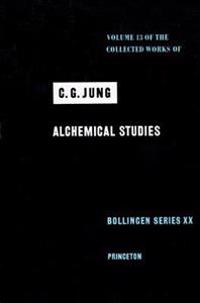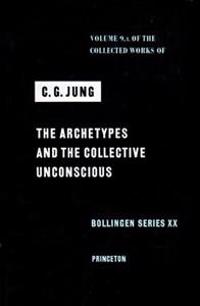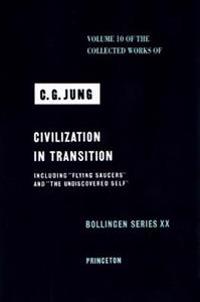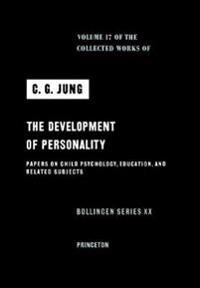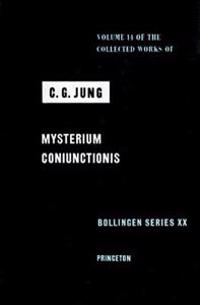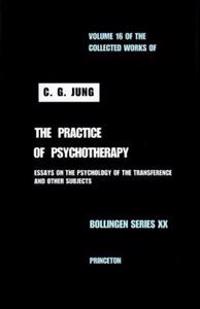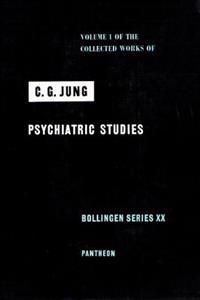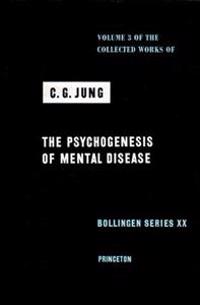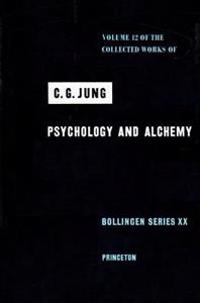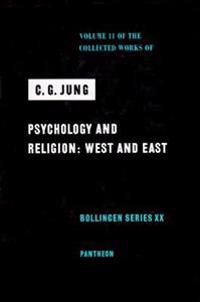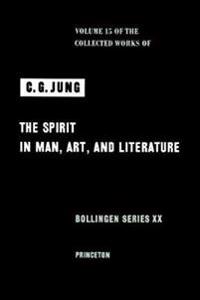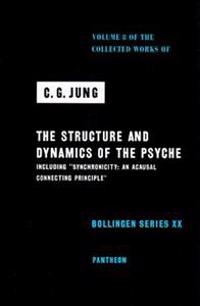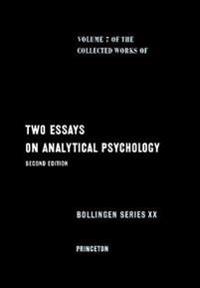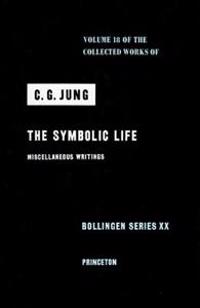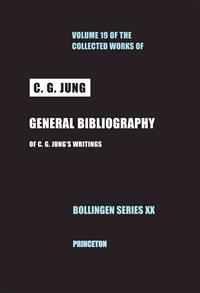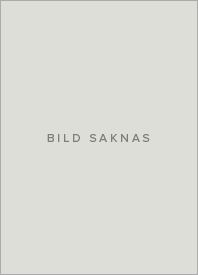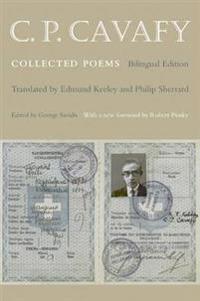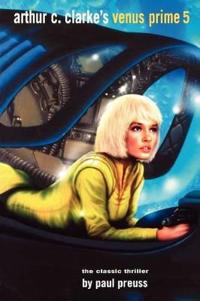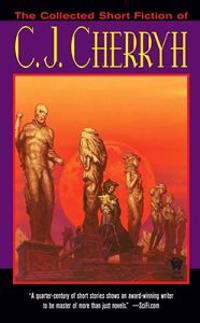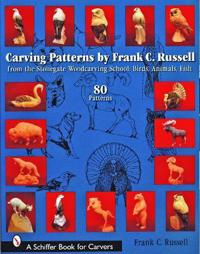Collected Works of C.G. Jung, Volume 13: Alchemical Studies (Inbunden)
avCarl Gustav Jung, C. G. Jung, Adler Gerhard
ISBN: 9780691097602 - UTGIVEN: 196802Five long essays that trace Jung's developing interest in alchemy from 1929 onward. An introduction and supplement to his major works on the subject, illustrated with 42 patients' drawings and paintings.[...]
Collected Works of C.G. Jung, Volume 9 (Part 1): Archetypes and the Collective Unconscious (Inbunden)
avCarl Gustav Jung, C. G. Jung, Michael Fordham
ISBN: 9780691097619 - UTGIVEN: 1969-01Essays which state the fundamentals of Jung's psychological system: "On the Psychology of the Unconscious" and "The Relations Between the Ego and the Unconscious," with their original versions in an appendix.[...]
Collected Works of C.G. Jung, Volume 10: Civilization in Transition (Inbunden)
avC. G. Jung, Herbert Edward Read, , Bollingen Series, 20
ISBN: 9780691097626 - UTGIVEN: 197008Essays bearing on the contemporary scene and on the relation of the individual to society, including papers written during the 1920s and 1930s focusing on the upheaval in Germany, and two major works of Jung's last years, "The Undiscovered Self" and "Flying Saucers."[...]
Collected Works of C.G. Jung, Volume 17: Development of Personality (Inbunden)
avCarl Gustav Jung, C. G. Jung, Michael Fordham
ISBN: 9780691097633 - UTGIVEN: 195409Papers on child psychology, education, and individuation, underlining the overwhelming importance of parents and teachers in the genesis of the intellectual, feeling, and emotional disorders of childhood. The final paper deals with marriage as an aid or obstacle to self-realization.[...]
Collected Works of C.G. Jung, Volume 14: Mysterium Coniunctionis (Inbunden)
avCarl Gustav Jung, Lawrence Danson, C. G. Jung
ISBN: 9780691097664 - UTGIVEN: 197009Jung's last major work, completed in his 81st year, on the synthesis of the opposites in alchemy and psychology.[...]
Collected Works of C.G. Jung, Volume 16: Practice of Psychotherapy (Inbunden)
avCarl Gustav Jung, C. G. Jung, Michael Fordham
ISBN: 9780691097671 - UTGIVEN: 196606Essays on aspects of analytical therapy, specifically the transference, abreaction, and dream analysis. Contains an additional essay, "The Realities of Practical Psychotherapy," found among Jung's posthumous papers.[...]
Collected Works of C.G. Jung, Volume 1: Psychiatric Studies (Inbunden)
avCarl Gustav Jung, C. G. Jung, Gerhard Adler
ISBN: 9780691097688 - UTGIVEN: 197007Over one hundred forty items, representative of Jung's interests and professional activities and spanning sixty years, include lectures, forewords, reviews, articles, and letters[...]
Collected Works of C.G. Jung, Volume 3: Psychogenesis of Mental Disease (Inbunden)
avCarl Gustav Jung, C. G. Jung, Michael Fordham
ISBN: 9780691097695 - UTGIVEN: 1960-12This third volume of Jung's Collected Works contains his renowned monograph "On the Psychology of Dementia Praecox" (1907), described by A. A. Brill as indispensable for every student of psychiatry--"the work which firmly established Jung as a pioneer and scientific contributor to psychiatry." Also [...]
Collected Works of C.G. Jung, Volume 6: Psychological Types (Inbunden)
avCarl Gustav Jung, C. G. Jung, Michael Fordham
ISBN: 9780691097701 - UTGIVEN: 1971-08One of the most important of Jung's longer works, and probably the most famous of his books, "Psychological Types" appeared in German in 1921 after a "fallow period" of eight years during which Jung had published little. He called it "the fruit of nearly twenty years' work in the domain of practical[...]
Collected Works of C.G. Jung, Volume 12: Psychology and Alchemy (Inbunden)
avCarl Gustav Jung, C. G. Jung, William McGuire
ISBN: 9780691097718 - UTGIVEN: 196808A study of the analogies between alchemy, Christian dogma, and psychological symbolism. Revised translation, with new bibliography and index.[...]
Collected Works of C.G. Jung, Volume 11: Psychology and Religion: West and East (Inbunden)
avC. G. Jung, Michael Fordham
ISBN: 9780691097725 - UTGIVEN: 197001Sixteen studies in religious phenomena, including "Psychology and Religion" and "Answer to Job."
Collected Works of C.G. Jung, Volume 15: Spirit in Man, Art, and Literature (Inbunden)
avCarl Gustav Jung, C. G. Jung, Michael Fordham
ISBN: 9780691097732 - UTGIVEN: 196612Nine essays, written between 1922 and 1941, on Paracelsus, Freud, Picasso, the sinologist Richard Wilhelm, Joyce's Ulysses, artistic creativity generally, and the source of artistic creativity in archetypal structures.[...]
Collected Works of C.G. Jung, Volume 8: Structure & Dynamics of the Psyche (Inbunden)
avCarl Gustav Jung, C. G. Jung, Michael Fordham
ISBN: 9780691097749 - UTGIVEN: 197001A revised translation of one of the most important of Jung's longer works. The volume also contains an appendix of four shorter papers on psychological typology, published between 1913 and 1935.[...]
Collected Works of C.G. Jung, The: v. 5: Symbols of Transformation (Inbunden)
avC. G. Jung
ISBN: 9780691097756 - UTGIVEN: 1967-09-01Collected Works of C.G. Jung, Volume 7: Two Essays in Analytical Psychology (Inbunden)
avCarl Gustav Jung, C. G. Jung, Adler Gerhard
ISBN: 9780691097763 - UTGIVEN: 1967-02Provides insight into the development of Jung's thought on the psychology of the unconscious and its relation to the ego[...]
Collected Works of C.G. Jung, Volume 18: The Symbolic Life: Miscellaneous Writings (Inbunden)
avCarl Gustav Jung, C. G. Jung, William McGuire
ISBN: 9780691098920 - UTGIVEN: 197702This volume is a miscellany of writings that Jung published after the Collected Works had been planned, minor and fugitive works that he wished to assign to a special volume, and early writings that came to light in the course of research.[...]
Collected Works of C.G. Jung, Volume 19: General Bibliography. (Revised Edition) (Inbunden)
avLisa Ress, Carl Gustav Jung, C. G. Jung
ISBN: 9780691098937 - UTGIVEN: 197904As a current record of all of C. G. Jung's publications in German and in English, this volume will replace the general bibliography published in 1979 as Volume 19 of the Collected Works of C. G. Jung. In the form of a checklist, this new volume records through 1990 the initial publication of each or[...]
C.G. Jung Letters, Volume 1 (Inbunden)
avCarl Gustav Jung, C. G. Jung, Aniela Jaffe
ISBN: 9780691098951 - UTGIVEN: 1992-06Beginning with Jung's earliest correspondence to associates of the psychoanalytic period and ending shortly before his death, the 935 letters selected for these two volumes offer a running commentary on his creativity. The recipients of the letters include Mircea Eliade, Sigmund Freud, Esther Hardin[...]
Zofingia Lectures, The: (Supplementary Volume A of the Collected Works of C.G. Jung) (Inbunden)
avC. G. Jung
ISBN: 9780691098999 - UTGIVEN: 1983-11-01C. P. Cavafy: Collected Poems (Häftad)
avC. P. Cavafy, George Savidis
ISBN: 9780691141244 - UTGIVEN: 2009-10C. P. Cavafy (1863-1933) lived in relative obscurity in Alexandria, and a collected edition of his poems was not published until after his death. Now, however, he is regarded as the most important figure in twentieth-century Greek poetry, and his poems are considered among the most powerful in moder[...]
Arthur C.Clarke's Venus Prime (Häftad)
avPaul Preuss, Arthur C. Clarke
ISBN: 9780743434720 - UTGIVEN: 200201Professor J.Q.R. Forster leads a dangerous expedition to Jupiter's moon, Almathea. Forster's rival and arch nemesis, Randolph Mays "accidentally" crash-lands on Amelthea's surface with plans for claiming Forster's discoveries as his own. Only Sparta can prevent sabotage.[...]
The Collected Short Fiction of C.J. Cherryh (Pocket)
avC. J. Cherryh
ISBN: 9780756405267 - UTGIVEN: 2008-10Carving Patterns by Frank C. Russell (Häftad)
avFrank C. Russell
ISBN: 9780764324734 - UTGIVEN: 2006-07This pattern book provides over 100 woodcarving patterns and accompanying illustrations for 72 birds, animals, and fish. Each pattern has been used successfully by both Russell and his students to carve stunning figures in wood. While the patterns are the primary focus, general carving instructions[...]
Into the Wardrobe: C. S. Lewis and the Narnia Chronicles (Inbunden)
avDavid C. Downing
ISBN: 9780787978907 - UTGIVEN: 2005-08-31Coaching for Commitment Workshop: Facilitator's Guide with CD-ROM and DVD C (Övrig)
avDennis C. Kinlaw, Cindy Coe, Amy Zehnder
ISBN: 9780787982508 - UTGIVEN: 2007-12-31

